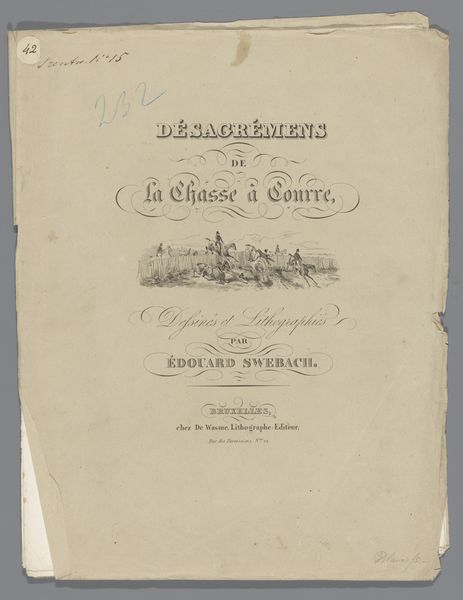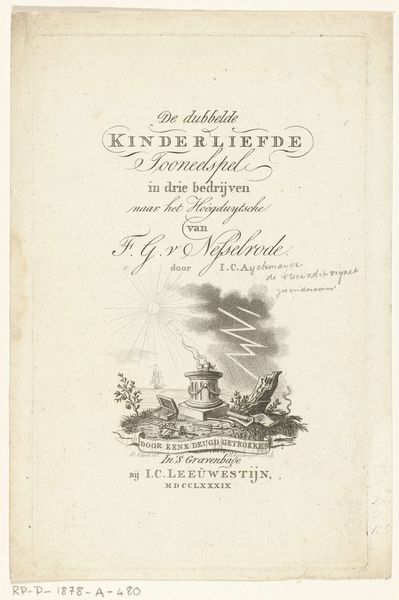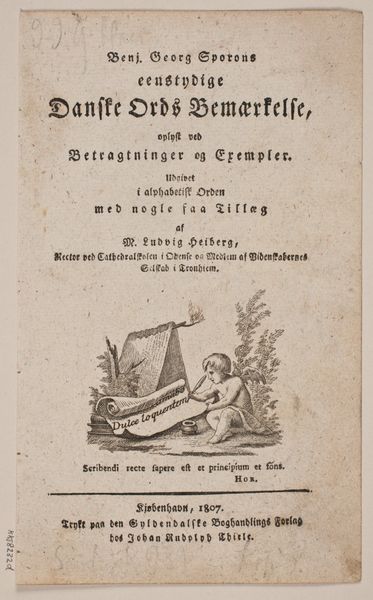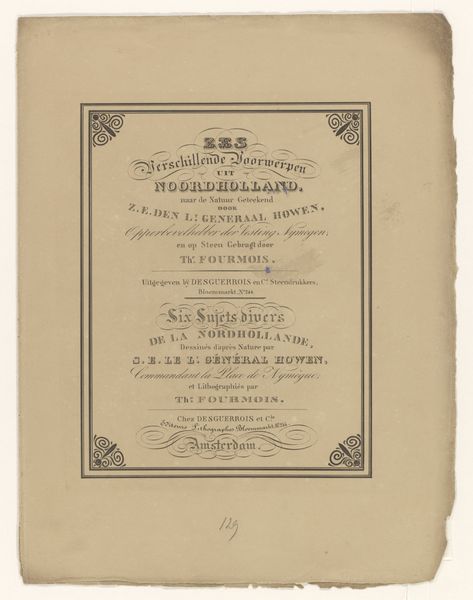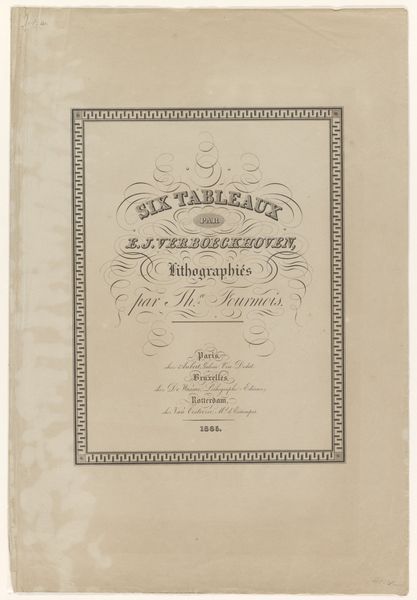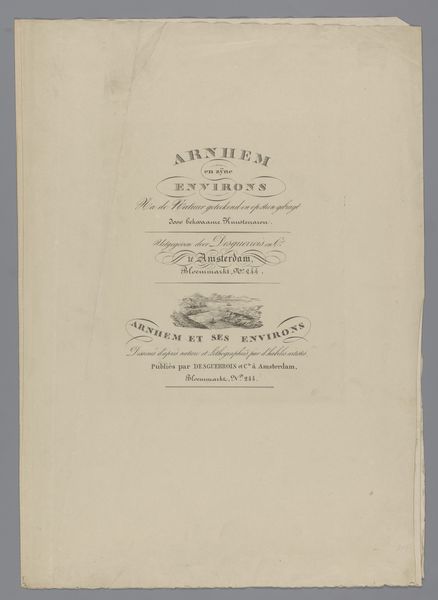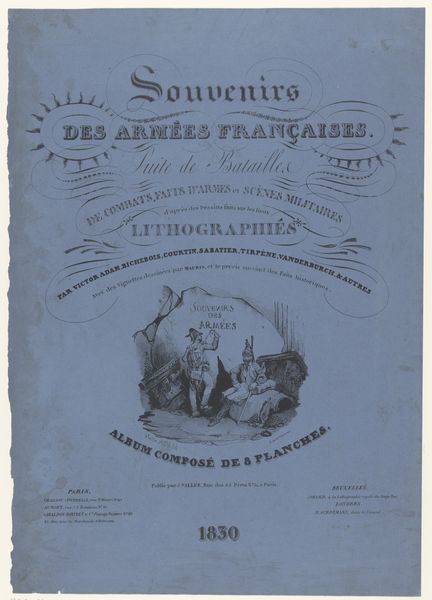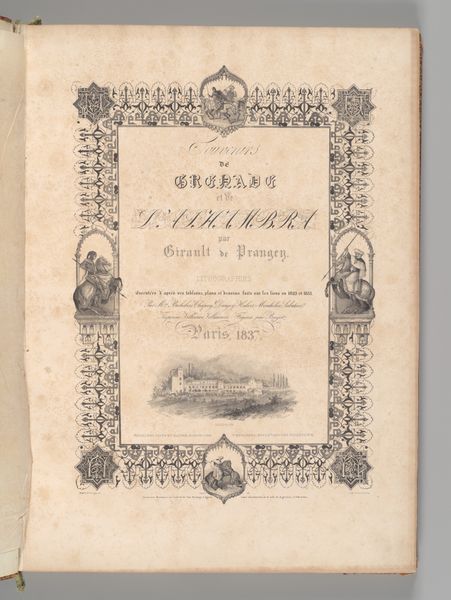
drawing, lithograph, print, etching, paper, ink, engraving
#
drawing
#
aged paper
#
lithograph
# print
#
etching
#
old engraving style
#
sketch book
#
hand drawn type
#
paper
#
personal sketchbook
#
ink
#
romanticism
#
pen-ink sketch
#
ink colored
#
line
#
sketchbook drawing
#
cityscape
#
storyboard and sketchbook work
#
sketchbook art
#
engraving
Dimensions: height 374 mm, width 278 mm, height 374 , width 556
Copyright: Rijks Museum: Open Domain
Curator: Before us we have “Omslag voor twaalf prenten met allerlei soorten voertuigen,” or, "Cover for twelve prints with all kinds of vehicles," made around 1828 by Victor Adam. It’s currently held in the Rijksmuseum collection. Editor: It’s a strikingly organized page; a variety of etched, engraved, and lithographed elements – fonts and the cityscape itself – contained by beautiful, almost decorative linework. A study in contrasts. Curator: Exactly. Adam’s piece, seemingly simple, unveils much about the period's socio-economic fabric. This isn’t just a depiction of vehicles, but an insight into transportation hierarchies and its burgeoning industrialization. The range of conveyances likely highlights emerging class divisions, who can afford what, which directly links to power. Editor: That’s an interesting consideration, but I see more than just class signifiers at play. Look at the compositional balance – the weight given to the architecture, the sky. The formal qualities of these lines suggests that even these vehicles represent freedom, a shift in social perception aided, of course, by Romanticism. Curator: True, Romanticism’s pull toward individuality shouldn’t be discounted. Yet, how can we overlook the historical reality? Road travel and transport, though enabling freedom for some, further entrenched power imbalances and opened possibilities for economic expansion for a few. Editor: I see your point about economic imbalance, but even the lettering demonstrates a balance of serif and sans-serif, bold and slender, reflecting how the artist has considered contrasting shapes and tones. It suggests this artwork represents the dawn of a new kind of freedom in mark-making, and visual construction more broadly. Curator: Certainly, it opens up interpretations. But what feels truly exciting is how seemingly neutral pieces like these open dialogues, making us rethink the very structures that supported Romantic notions of freedom. Editor: Precisely. It’s in this very tension—between formalism and historical context—that we grasp a work's multifaceted nature. The vehicles invite us to journey, not only across landscapes, but through layers of artistic, social, and historical interpretation.
Comments
No comments
Be the first to comment and join the conversation on the ultimate creative platform.
